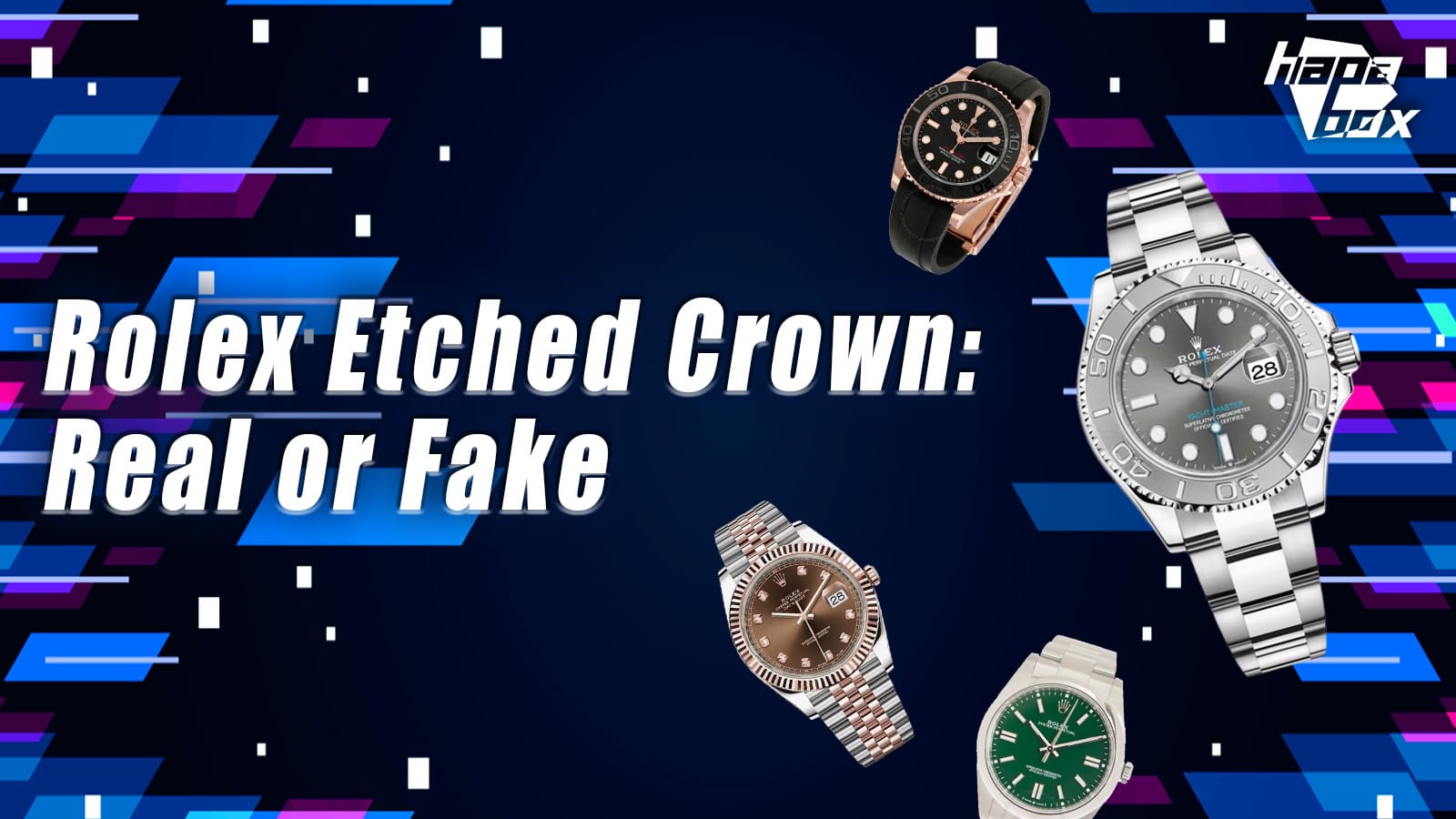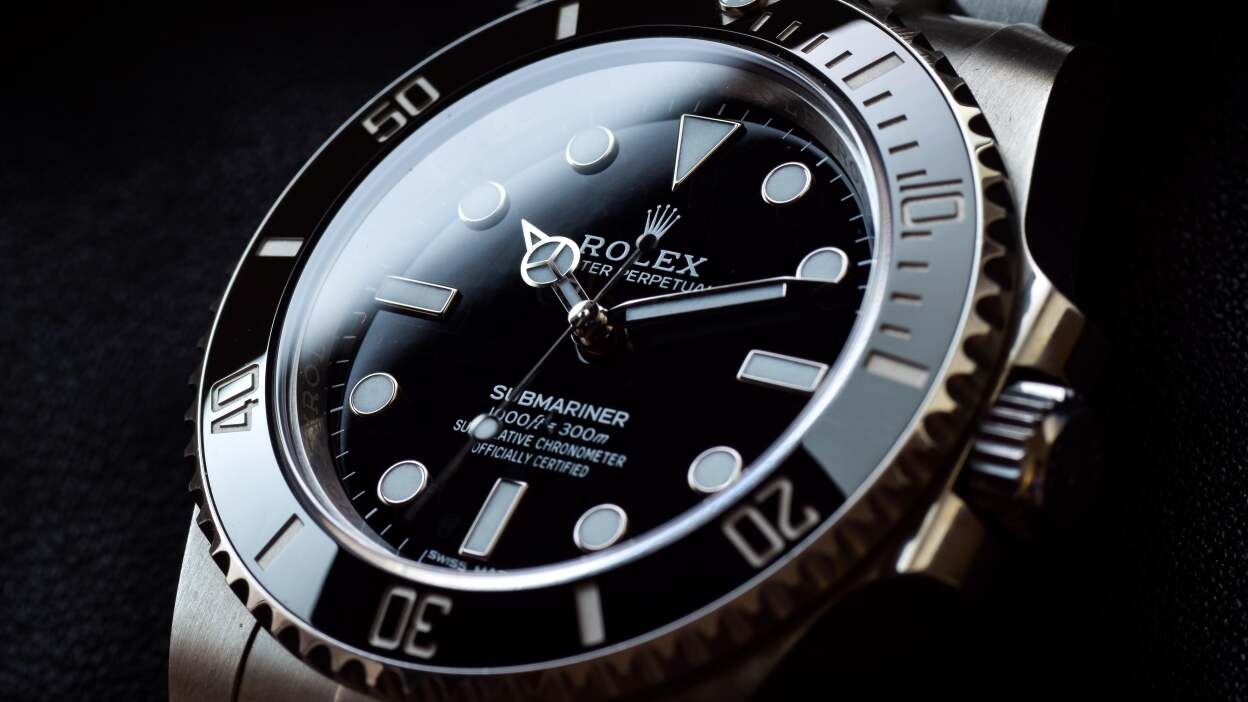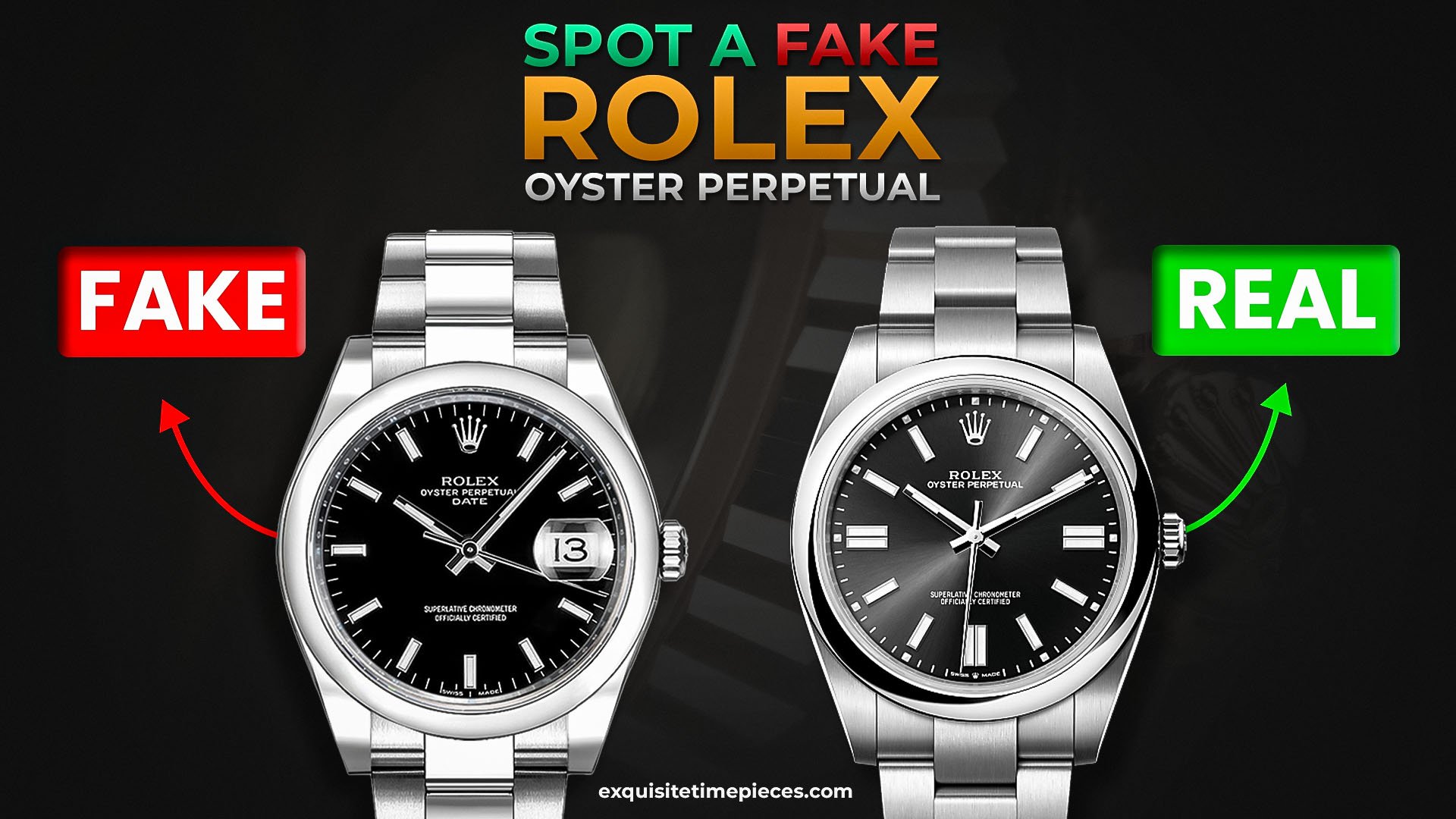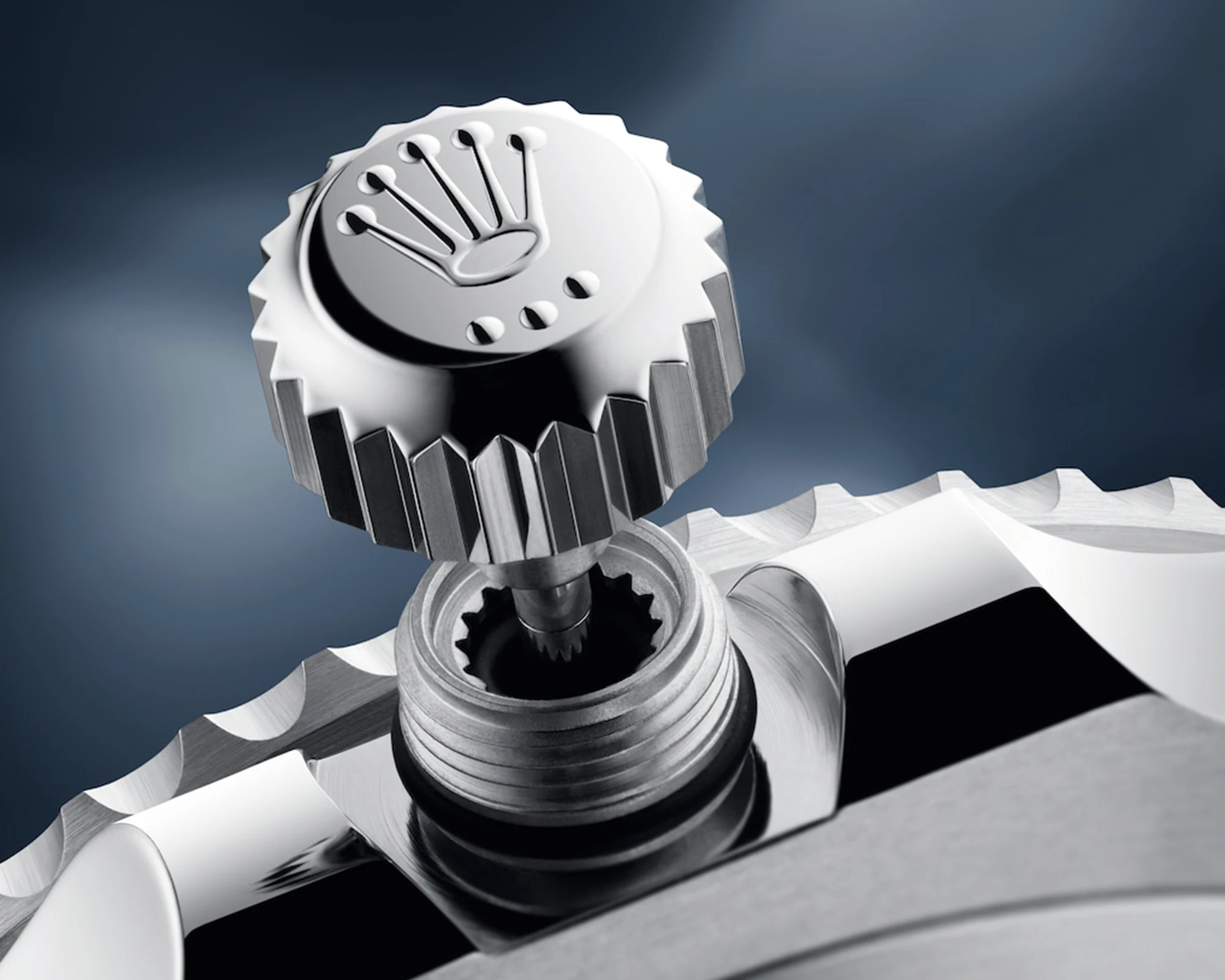Rolex Laser-Etched Crown Explained: Spotting Fakes and the “Three-Point” Misconception

Rolex watches are synonymous with luxury, precision, and enduring value. However, with such prestige comes the unfortunate reality of counterfeits. For decades, collectors and enthusiasts have sought out subtle details that indicate a genuine Rolex. One such feature, often shrouded in a bit of mystery and misinformation, is the Laser-Etched Crown (LEC).
You might have heard whispers of a "three-point crown" etched on the crystal, or that every single Rolex, old or new, has this mark. This blog post will set the record straight and dive into the world of the Rolex LEC.

The Rolex Laser-Etched Crown: What It Is and When It Appeared
Not all Rolex watches have a laser-etched crown, and it definitely does not have "three points" as many people think.
The Rolex Laser-Etched Crown, often called the LEC, is a microscopic etching of the Rolex crown logo on the sapphire crystal, typically at the 6 o'clock position. Rolex introduced this subtle security feature around 2001 or 2002. Vintage Rolex watches produced before this timeframe will not have the LEC. The LEC is so tiny and finely detailed that it's designed to be difficult to see with the naked eye under normal lighting conditions. This is where the misconception about its presence on all Rolexes arises.
Why Did Rolex Introduce the Laser-Etched Crown?
Rolex is known for combating counterfeiting, and the LEC is a testament to this commitment. The goal was to create a feature that is difficult for counterfeiters to replicate with the same level of precision and detail. Unlike traditional anti-counterfeiting methods, the LEC is subtly integrated into the watch's design without compromising its aesthetic appeal. It serves as a hidden mark of authenticity, making it a valuable tool for distinguishing genuine Rolex watches from fakes.
Finding and Identifying the Rolex Laser-Etched Crown
You can find the LEC with effort and the right tools. Here's how:
- Bright Light is Key: Shine a bright light source, such as a flashlight, directly onto the crystal, particularly around the 6 o'clock mark.
- Angle Matters: Tilt the watch and hold the light at an angle, allowing the light to refract off the tiny dots that make up the etched crown.
- Magnification Helps: Use a magnifying glass or a loupe to help in spotting the LEC and examining its details.
When found, a series of tiny dots arranged in the shape of the iconic Rolex crown will be visible.
The Laser-Etched Crown and Authenticity Verification
The presence of a correctly executed LEC is a strong indicator of a genuine Rolex, particularly on models produced from 2002 onwards. Counterfeiters have tried to replicate it, but their attempts often lack the finesse and precision of a genuine Rolex etching.
What to look for when examining the LEC:
- Crispness and Precision: A genuine LEC will be composed of tiny, well-defined dots that form a sharp, clear crown shape.
- Absence of "Fogginess": Fake etchings can sometimes appear "foggy" or have a less defined outline.
- The "S" Mark: If you see a tiny "S" within the crown etching, it indicates that the crystal has been replaced during service. This is a normal and acceptable sign of a Rolex that has undergone authorized service.

However, the LEC is not the sole determinant of authenticity. Skilled counterfeiters are constantly improving their techniques, and relying on just one feature to authenticate a Rolex is risky.
Other Essential Rolex Authentication Features
To ensure a Rolex is genuine, consider a range of factors:
- Serial Numbers: Genuine Rolex watches have engraved serial numbers, usually found at the 6 o'clock position under the bracelet.
- Dial Quality: Examine the dial for crisp, even printing, correct font styles, and proper alignment of markers and indices.
- Movement: The movement of a Rolex watch is a masterpiece of engineering. Authentic movements are highly refined and finished.
- Case and Bracelet: Pay attention to the quality of the materials, the finish, and the overall craftsmanship of the case and bracelet.
- Rehaut Engraving: Modern Rolex models feature the word "ROLEX" engraved around the inner bezel (rehaut). This engraving should be sharp and consistent.
- Winding Crown: The winding crown should have precise fluting and the Rolex crown logo engraved on its end.
- Cyclops Lens: If the Rolex has a date function, the cyclops lens should magnify the date clearly and without distortion.
The "Three Points" Confusion: Winding Crown Markings
The "three points" often mentioned in relation to Rolex watches refer to the markings on the winding crown, not the etched crown on the crystal. These dots or dashes indicate the watch's water resistance system:
- Three Dots: Typically indicate the Triplock waterproof system, found on models like the Submariner, Sea-Dweller, and Daytona.
- Other Markings: A single dot or a dash with one or two dots can indicate other features, such as the Twinlock system or the material of the crown.

It's important to differentiate these winding crown markings from the laser-etched crown on the crystal.
Conclusion: A Tiny Detail with Big Significance
The Rolex Laser-Etched Crown is a fascinating example of Rolex's commitment to craftsmanship and security. While it's a subtle feature that can be challenging to spot, it plays a vital role in authenticating genuine Rolex watches, especially on newer models. However, the LEC is just one piece of the puzzle when it comes to authentication. To be confident in a Rolex, always examine all aspects of the watch and, if necessary, consult with a certified Rolex dealer or a reputable watchmaker. By understanding the truth about the Rolex LEC and other authentication features, you can navigate the world of Rolex collecting with greater confidence and appreciate the meticulous attention to detail that goes into each genuine timepiece.
Frequently Asked Questions
- Do all Rolex watches have a laser-etched crown?
No. Rolex introduced the LEC around 2002, so models produced before that date will not have it. - Is the laser-etched crown easy to see?
No. It's a microscopic etching designed to be difficult to see with the naked eye. You'll likely need a bright light and magnification. - Does the laser-etched crown have three points?
No. The "three points" typically refer to the dots on the winding crown, which indicate the Triplock system. The classic Rolex crown logo usually has five points. - What does it mean if the laser-etched crown is missing or looks off?
This could indicate a fake watch or that the crystal has been replaced with a non-Rolex crystal. - Where can I get my Rolex authenticated?
You can take it to an Official Rolex Service Center or a reputable watch dealer specializing in pre-owned Rolex watches.
